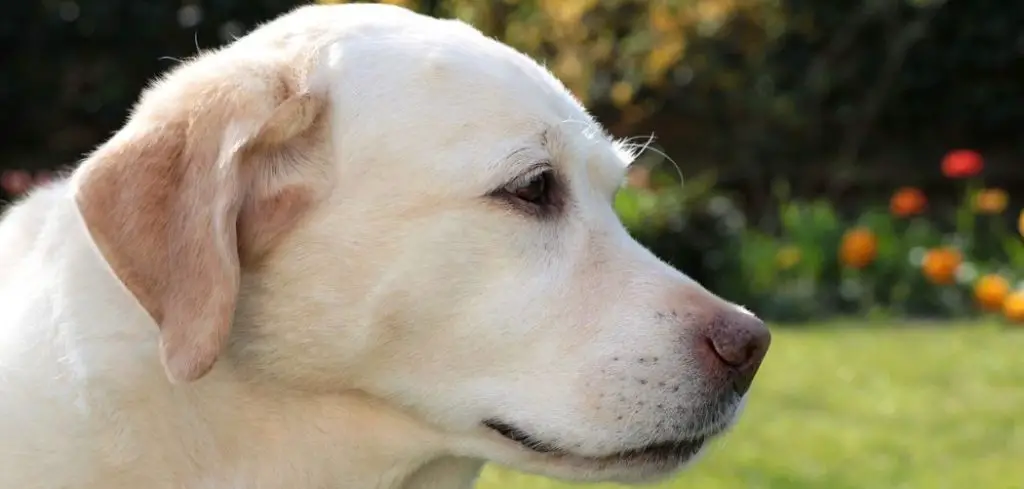If your dog is drooling, has diarrhea, and isn’t eating, it’s not just an upset stomach—it could be a sign of something more serious.
While digestive issues are common in dogs, this specific combination of symptoms suggests that your dog is feeling extremely unwell.
Whether it’s from something they ate or an underlying condition, these signs should never be ignored.
We walk you through the possible causes, home care tips, when to visit the vet, and how to keep your dog safe moving forward.
Dog Drooling Diarrhea Not Eating: Why It Happens
When a dog is drooling, has diarrhea, and isn’t eating, these symptoms together are often linked to gastrointestinal infections, toxin ingestion, pancreatitis, inflammatory bowel disease, or internal parasites.
When a dog is drooling, has diarrhea, and is not eating, it’s usually because their digestive tract is irritated or inflamed, and they’re feeling nauseated or in pain.
The drooling may come from nausea, the diarrhea from GI upset, and the appetite loss from the overall discomfort.

Dog Drooling Diarrhea Not Eating: Common Causes
Gastrointestinal Infections or Food Poisoning
One of the most common culprits behind diarrhea, drooling, and appetite loss in dogs is a gastrointestinal infection.
Bacteria like Salmonella or Clostridium can trigger intense digestive distress, especially after eating spoiled food, trash, or contaminated water.
These infections can cause sudden, watery diarrhea, drooling from nausea, and a refusal to eat.
Mild cases may resolve on their own, but more serious infections can lead to dehydration, fever, and even bloody stool.
Related: Dog drooling and not eating (Causes and when to worry)
Ingesting a Toxin or Foreign Object
If your dog got into something toxic—like human medications, antifreeze, chocolate, or toxic plants—it could trigger vomiting, drooling, diarrhea, and loss of appetite.
Some toxins irritate the GI tract, while others affect organs or the nervous system.
Similarly, swallowing a foreign object (toy, sock, bone fragment) may cause partial obstruction, leading to diarrhea, abdominal pain, and drooling from nausea.
If your dog is also vomiting, acting disoriented, or showing signs of distress, seek emergency care right away.
Pancreatitis
Pancreatitis is a painful inflammation of the pancreas, often triggered by fatty foods or dietary indiscretion.
It causes nausea, vomiting, diarrhea, abdominal pain, and drooling—particularly after meals. Dogs with pancreatitis often appear lethargic, uncomfortable, and avoid food entirely.
Senior dogs and certain breeds like Miniature Schnauzers are at higher risk.
This condition requires veterinary treatment and often hospitalization, as IV fluids, pain relief, and rest are key to recovery.
Internal Parasites
Parasites like roundworms, hookworms, and Giardia can disrupt your dog’s digestive system.
Puppies and rescue dogs are especially susceptible. Symptoms include chronic or sudden diarrhea, drooling (from nausea), poor appetite, bloating, and weight loss.
If your dog’s stool has mucus, blood, or visible worms, or they’ve recently been adopted or exposed to infected dogs or areas, bring a stool sample to your vet for testing.
Most parasitic infections are treatable with dewormers or antiparasitic medication.
Inflammatory Bowel Disease (IBD)
IBD is a chronic condition where the immune system attacks the lining of the gut.
This causes persistent diarrhea, nausea, drooling, and reduced appetite.
Dogs may lose weight, vomit intermittently, and seem lethargic or uncomfortable after eating.
While not an emergency in most cases, IBD requires lifelong management, typically with dietary changes, medications, and regular monitoring.
What to Do if Your Dog Is Drooling, Has Diarrhea, and Not Eating
If your dog is showing these signs, here are practical home steps to take:
Withhold food for 12–24 hours (but not water) to let the stomach rest.
Offer ice chips or small sips of water to prevent dehydration.
Try bland food like boiled chicken and plain rice if symptoms improve.
Avoid treats, table scraps, or dairy, which can worsen GI symptoms.
Monitor for blood in vomit or stool and track their energy level.
If your dog’s diarrhea persists or they continue to refuse food or drink, it’s time to see the vet.
When to Call or Visit Your Vet
Call your vet immediately if:
Diarrhea lasts more than 24–36 hours or worsens.
Your dog refuses both food and water for over a day.
There is blood in the stool or vomit.
Your dog becomes lethargic, weak, or starts vomiting repeatedly.
You suspect toxin ingestion or swallowed a foreign object.
Dehydration can occur rapidly—especially in puppies, small breeds, or seniors—so early intervention is key.
Related: My dog is lethargic not eating and drooling (Here’s why)
Key Takeaway
If your dog is drooling, has diarrhea, and is not eating, their body is telling you something is seriously wrong.
While the cause could be mild and resolve with care, this trio of symptoms can also signal more serious conditions like pancreatitis or toxin ingestion.
Don’t wait too long to seek help—your dog’s health and comfort depend on your quick action. The sooner you get to the root of the problem, the better the chances of a smooth recovery.
